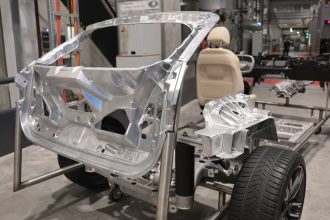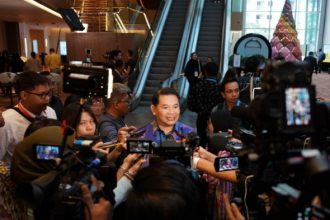Hybrid work models are transforming companies in major ways. Leaders from organizations as diverse as The Gorilla Glue Company, UC Davis, and Far Niente Wine Estates share why hybrid is the future of work and how organizations can leverage it for success. The benefits and challenges outlined by these leaders’ responses resemble the conversations I have with 20-30 leaders every month who ask me for advice about how to return to the office and lead hybrid teams, and emblematize the kind of conversations progressive organizations across the US are having right now.
The Benefits of Hybrid Work
For Beth Giglio, Chief Human Resources Officer at Gorilla Glue, hybrid work is driving key business and talent outcomes thus far. “Hybrid work helps us at Gorilla Glue drive strong business outcomes in attracting, engaging and retaining talent,” said Giglio. “We offer flexibility for hybrid, but we know that we are better together and value the power of in-office connections and celebrating milestones that matter together. It’s important for our people to be face-to-face which fosters our care and commitment for each other.”
“We are learning that employees, regardless of generation or role, want and appreciate flexibility and the ability to meet personal needs, all while still accomplishing their work,” said Giglio. “Hybrid options as well as flexible work schedules are key to recruiting top talent. “
Tammy Kenber, Chief Human Resources Officer at UC Davis, also sees benefits to hybrid for both employees and the organization. “Flexibility for employees; savings for leased spaces off campus and parking woes on campus; and sustainability – fewer cars on the road,” said Kenber. With hybrid, UC Davis attracts top talent from beyond their local area and provides opportunities for employees to work from almost anywhere.
“UC Davis is focused on the work, not the location. We aim to provide flexibility and choice for our employees whenever possible to enable their best performance and highest engagement,” said Kenber. “Leveraging hybrid and remote work is a key part of our overall strategy as a world-class institution to recruit and retain the most talented workforce.”
Julie Secviar, Vice President of Human Resources at Far Niente Wine Estates, believes hybrid models depend on the role. If suitable, though, they offer advantages. “It provides flexibility to the employee to meet their personal needs. Additionally, it provides cost savings to the company on the reduction of office space,” said Secviar. They gain space for guests at their working winery where every bit of space matters.
“For positions where outcomes matter more than physical presence, hybrid and remote options provide benefits for employees and the business,” Secviar said. “Still, constant communication and connectivity are vital to overcome challenges from loss of proximity.”
Challenges of Hybrid Work
While the advantages of hybrid work are clear, companies face difficulties implementing these models. Determining proper design and policies is first. Gorilla Glue mandates some in-office days but gives discretion over others. “We aim for an approach that balances the value of face-to-face collaboration with the benefits of remote work,” said Giglio. UC Davis aims for flexibility with high performance.
Far Niente established codes of conduct, key performance indicators, and frequent touchpoints to ensure productivity and connectivity. “It takes work to get the model right, especially with long-time employees used to traditional in-office roles,” said Secviar. “Creativity, communication, and inclusion are key.”
Measuring productivity and accountability is another challenge, especially if outcomes are hard to quantify. Gorilla Glue focuses on results, surveys employees, and uses data for decisions. “While we can’t monitor hours or track physical presence, we regularly evaluate work output and quality, client satisfaction, engagement, and team metrics to ensure individual and group goals are met,” said Giglio.
UC Davis and Far Niente also rely on metrics and employee feedback. “Surveys, pulse checks, and casual conversations provide insights into what’s working and not so we can optimize our policies and processes,” said Kenber. “Employee engagement is vital to our success with hybrid models.”
Ensuring equity is a third issue. Hybrid may suit some employees better. Companies should provide choice when possible. Gorilla Glue explores options for frontline staff. “We aim to provide flexibility for all roles whenever feasible given the nature of the work,” said Giglio.
UC Davis embraces hybrid for suitable roles. “Any model must work for all types of positions to be truly effective,” said Kenber. Far Niente sees potential to expand beyond knowledge workers over time. “With proven success and the right policies, hybrid can work for more areas than initially considered possible,” said Secviar.
The Role of HR in Hybrid
The role of HR leaders like Giglio, Kenber, and Secviar is crucial to addressing these challenges. They study trends, evaluate models, and determine the best approach for culture.
Giglio’s team uses data on hiring, retention, and engagement to gain insights, discussing regularly with leaders and employees. “We invested in training for our people leaders to help enable flexibility while maintaining engagement and performance. We make the best choice for our organization based on our values, culture, employee feedback and talent strategy, though we aim to provide as much flexibility and autonomy as possible for our people,” Giglio said.
Kenber sees HR leaders continue relying on experts and feedback for strategic decisions. “HR leaders have always engaged and relied upon external experts and resources to solicit information from employees through a neutral third-party and to help them make and execute strategic, data-informed decisions. I do not see that changing as the workplace evolves,” said Kenber.
Secviar focuses on culture, inclusion, touchpoints, surveys, and communication to engage remote employees. “It takes a lot of work and creativity, and everyone is different,” said Secviar. “But with the right tools and genuine caring for our people, we can build connectivity and a sense of shared purpose regardless of location.”
All believe hybrid is here to stay at their organizations. Gorilla Glue will refine their model for optimal in-office and remote work as teams become more global. “The future of work is flexibility. Hybrid models that align to company culture while empowering employees with choice and trust in them to get the job done wherever they work best will be the norm,” said Giglio.
The Future is Hybrid
UC Davis will continue embracing hybrid and remote work where suitable and impactful. “UC Davis is a world-class organization with amazingly talented employees – embracing flexible work is a key part of our recruiting and retention strategy,” said Kenber. “We aim to be on the cutting edge of changes in the workplace to achieve our mission.”
Far Niente sees hybrid as the future that workers want. “The model has been proven to work and therefore this generation of workers are going to be desirous of this option,” said Secviar. “If we want to continue attracting top talent, we need to provide the flexibility and work models that they expect and thrive in.”
The future of work is human, not location. With strong policies, focus on outcomes, and communication, companies achieve sustainable success through hybrid models. HR leaders drive this transformation, empowering employees with choice for high performance wherever works best.
“The future of work will be customized, flexible, and human-centered,” said Kenber. “Rather than place or hours, what matters most is the meaningful work we accomplish together guided by shared values and purpose.”
Hybrid recognizes our shared humanity while amplifying it through connectivity across space. The future of work has already arrived, transforming organizations and empowering their people in profound ways. Leaders embracing change will thrive; those clinging to outdated models will fall behind. The choice is clear — choose hybrid and choose the future.
Read the full article here





